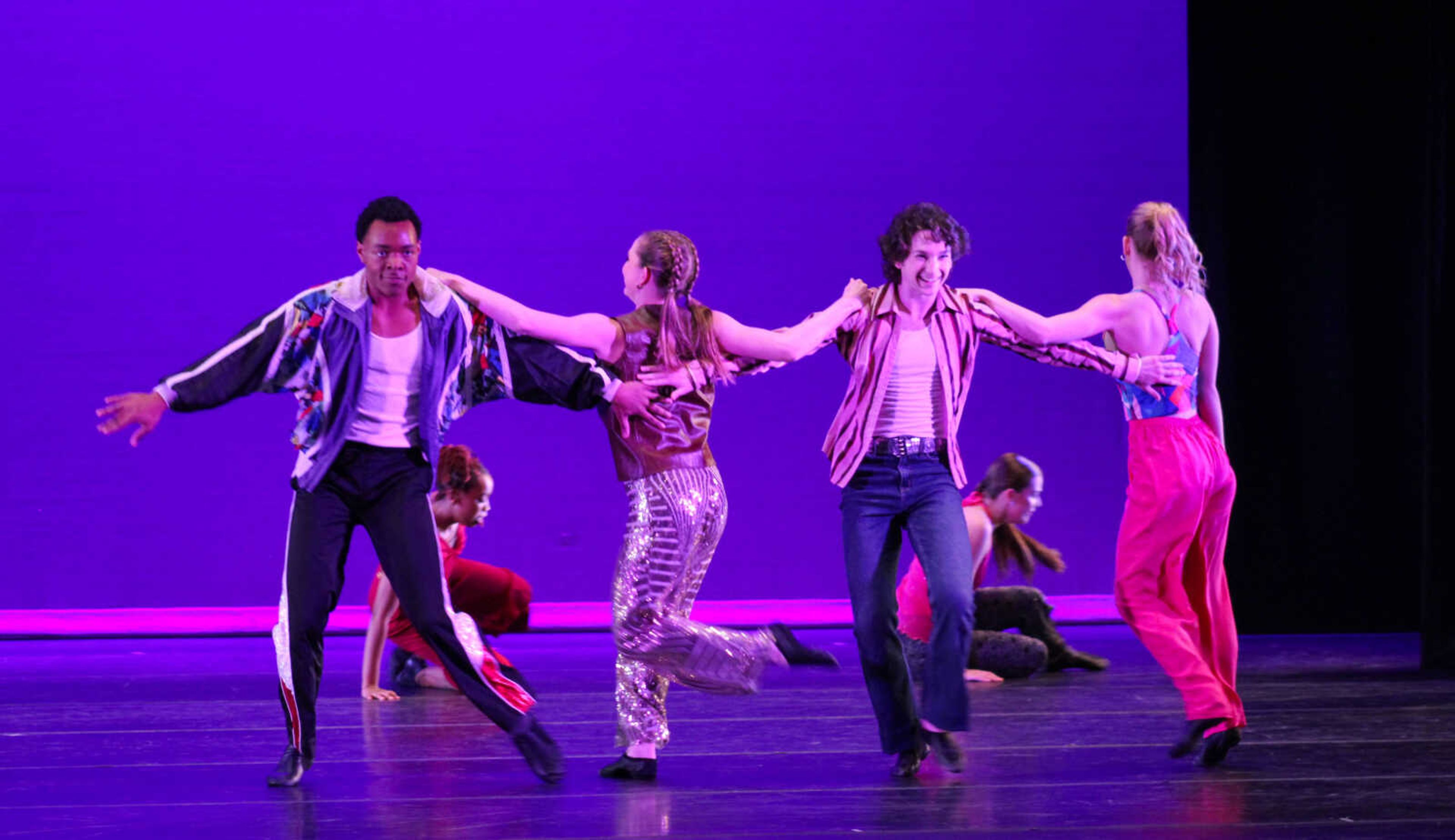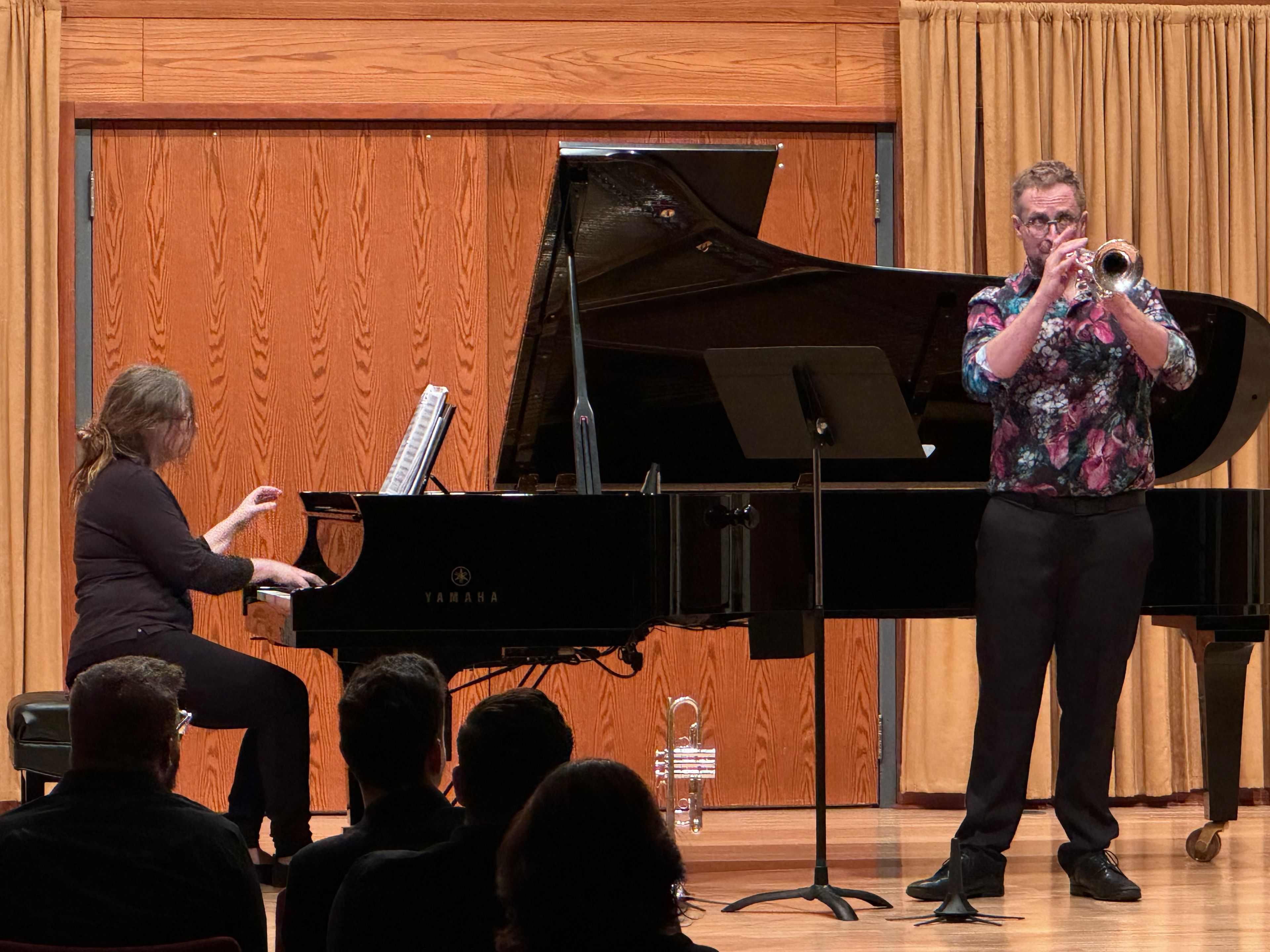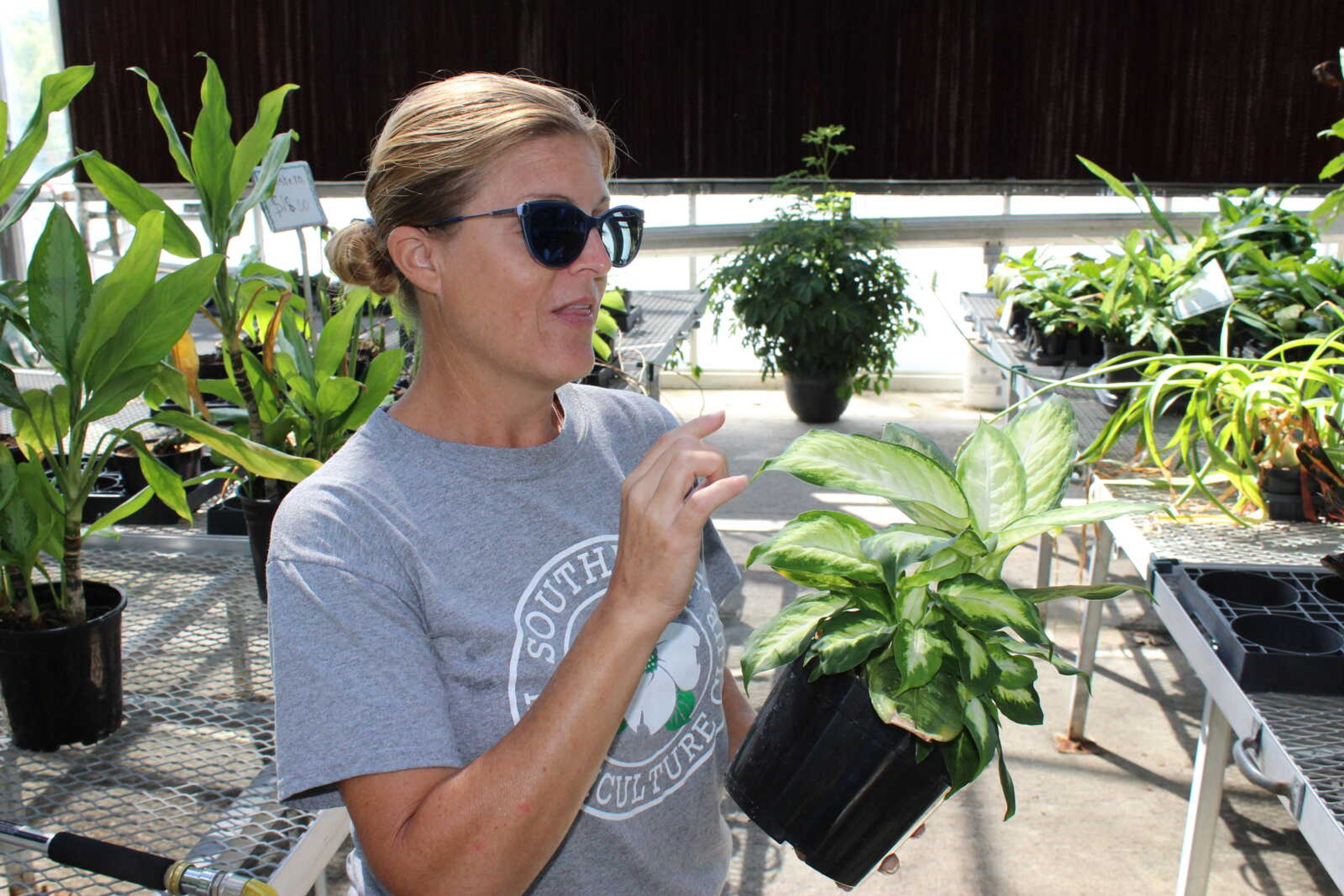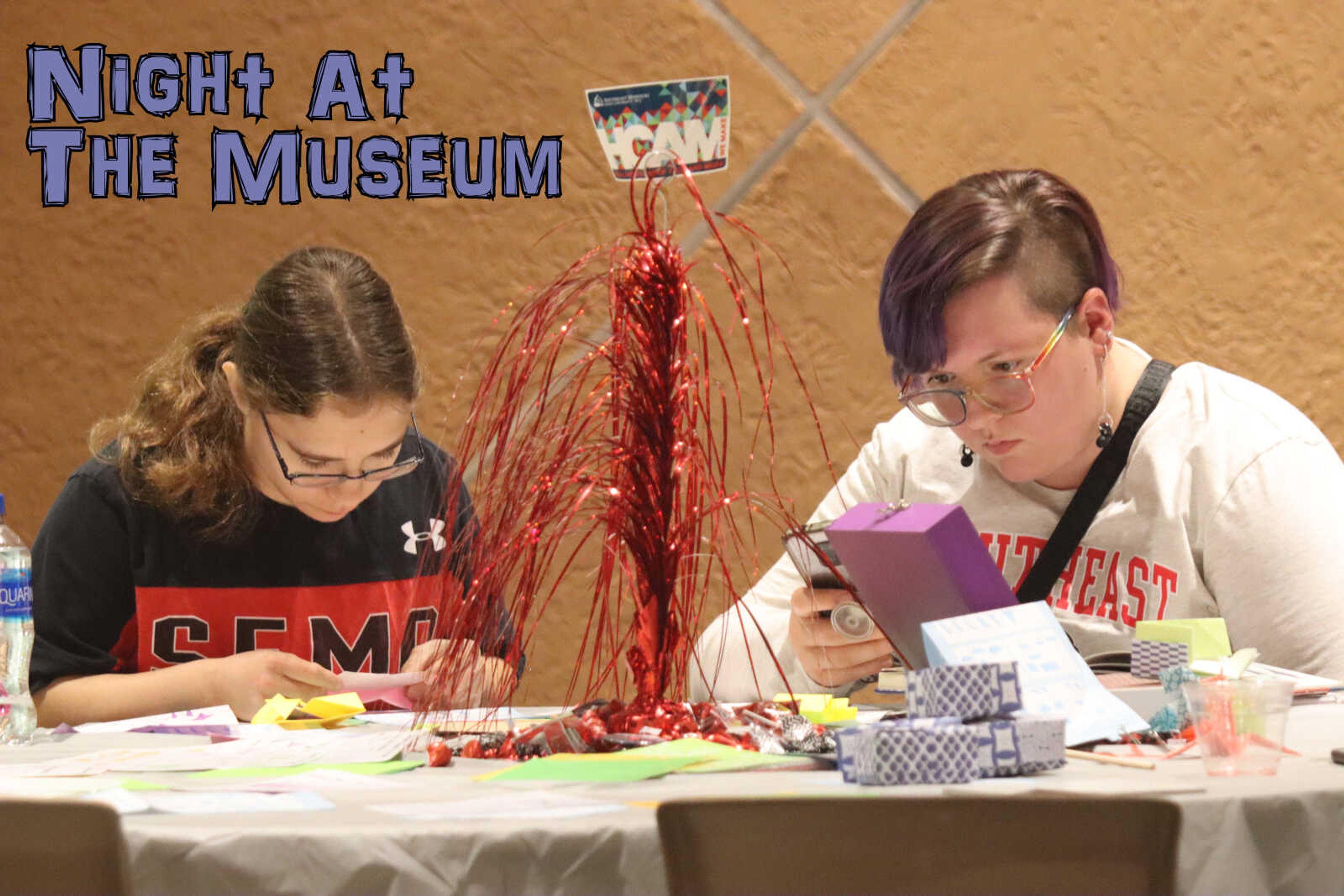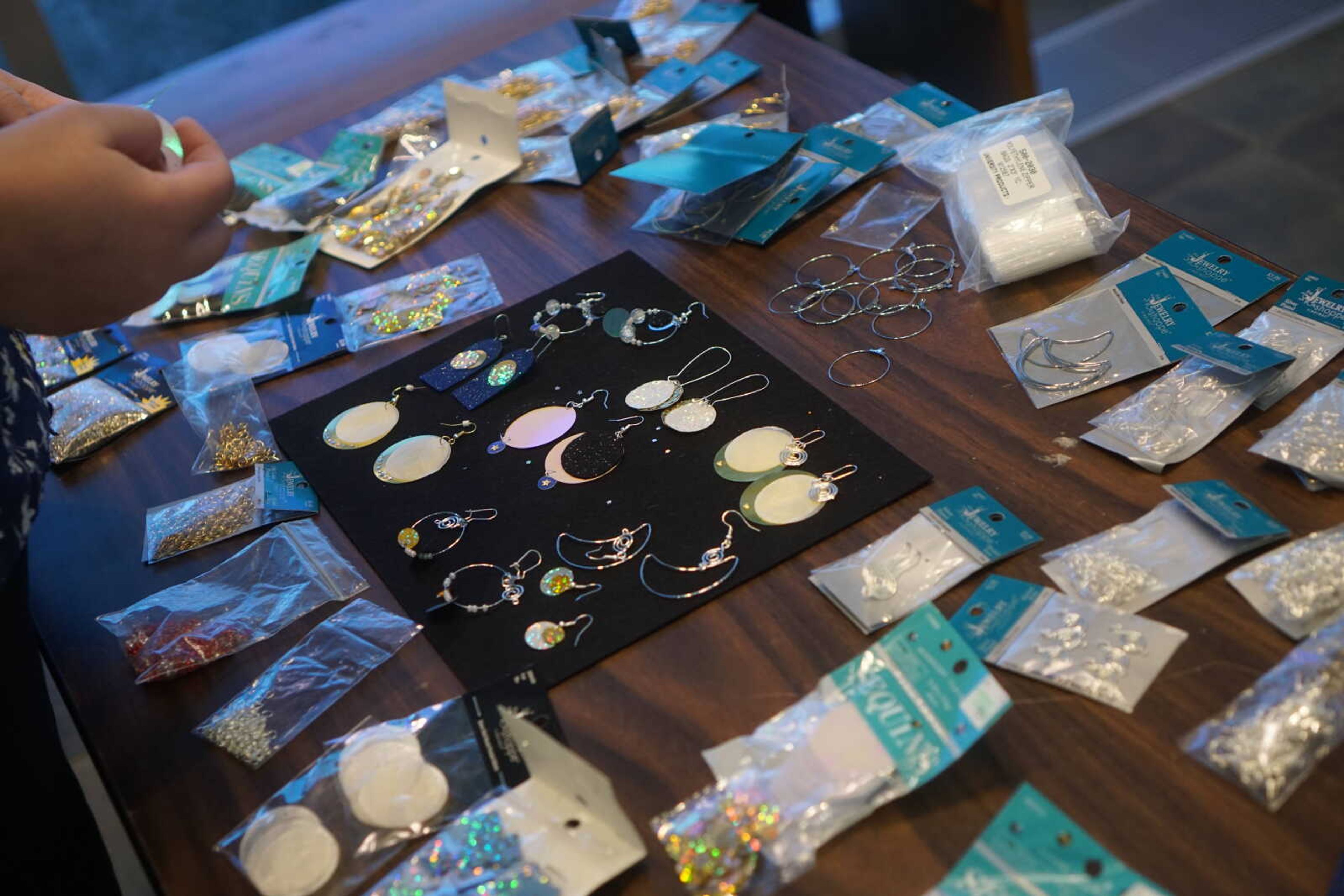Southeast Professor Takes Viewers Back with Her Artwork
Nostalgia can come from anything at any time. A sweet, savory smell may bring back memories of when Grandma made cookies. Looking at a small piece of burgundy fabric might feel like déjŕ vu because Mom has the same color dress. This familiar feeling is what viewers experience when they look at Joni Hand’s works...
Nostalgia can come from anything at any time. A sweet, savory smell may bring back memories of when Grandma made cookies. Looking at a small piece of burgundy fabric might feel like déjŕ vu because Mom has the same color dress. This familiar feeling is what viewers experience when they look at Joni Hand’s works.
As well as being an artist, author and student solo coordinator at Catapult Creative House, Hand teaches art history at Southeast.
Hand utilizes different types of art forms such as found object art, which involves creating sculptures from random objects she finds or receives.
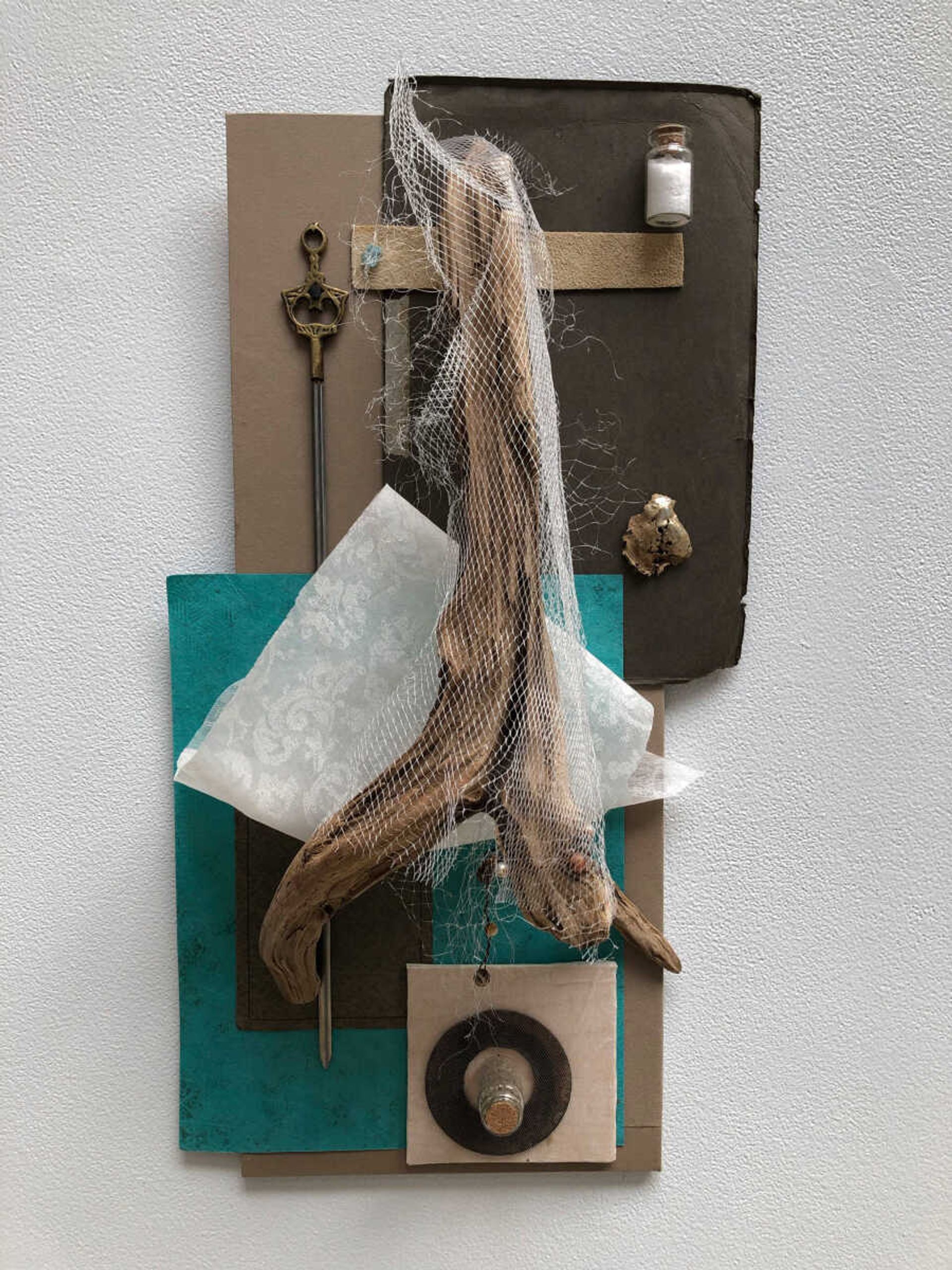
“A lot of the comments that I get from my work is, ‘That reminds me of something I had growing up,’” Hand said. “There’s a lot of nostalgia, I think, that people bring or get from them.”
“Pollen”, one of Hand’s sculptures, was set within an old rusted vent cover with paint chipping off the wooden frame, showing its age. A handmade book she received from a friend lays inside the vent cover with drawings and embroideries scattered on the pages. Outside the vent cover is a yellow Altoids tin that collects the hanging yellow string trailing from the handmade book. All of these items may sound random, but to Hand every object had its own place.
Hand said her inspiration for a piece can come from anywhere. Some of her pieces have specific meanings behind them. “Pollen” came to Hand when she walked past a group of dead bees on the grounds of River Campus. Another piece’s inspiration came from a topic of an exhibition the art was displayed in.
The majority of her inspiration comes to her through her personal aesthetic lens, she said. Instead of looking at each object individually, Hand looks to see how each object can come together as a whole. She said she usually has to mentally visualize the piece in her head, and then she goes to see if she can make it work in her studio.
“Sometimes it’s just visually pleasing, it’s called ‘formalism,’” Hand said. “Looking at things like a puzzle — how they fit together, how I think they should fit together. Whether it’s because of their shape, or their color, or whatever it happens to be, just organizing it that way.”
Hand said she believed she couldn’t make it as an artist, and started teaching AP art history on the high school level, where she fell in love with the subject. She also loved how she could still be included in the “art world.”
“To me, both are important — talking about art and also making it,” Hand said. “I’ve always drew things and painted. I’ve always been around the arts, but my focus since I got my Ph. D and been here at SEMO really has been art history.”
Usually, Hand said, an art historian isn’t a studio artist but rather a person who studies it. She said the same goes for most artists who don’t study art; they just create it.
Hand’s artwork will be displayed at the Faculty Art Exhibit at Crisp Museum from May 3 to June 23.

